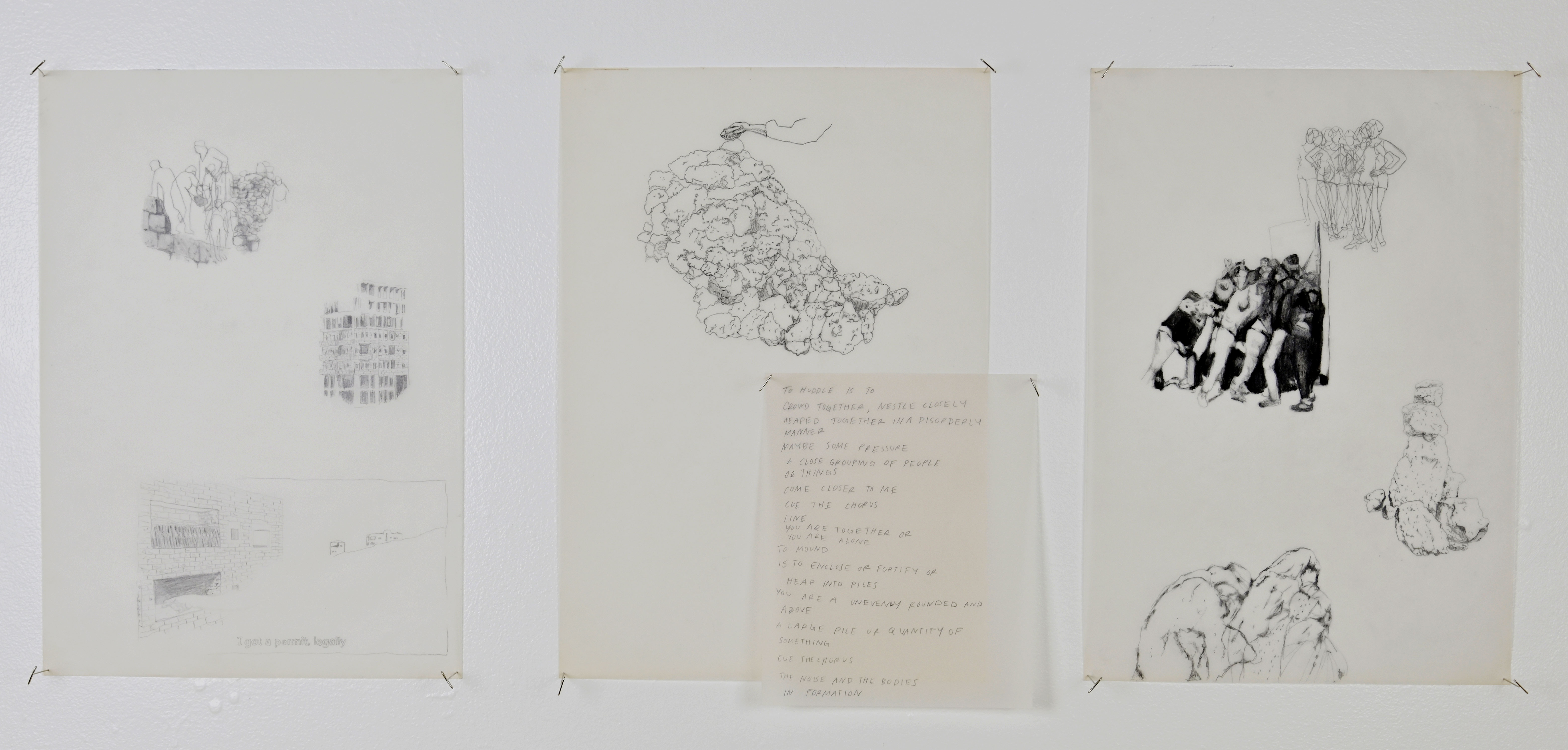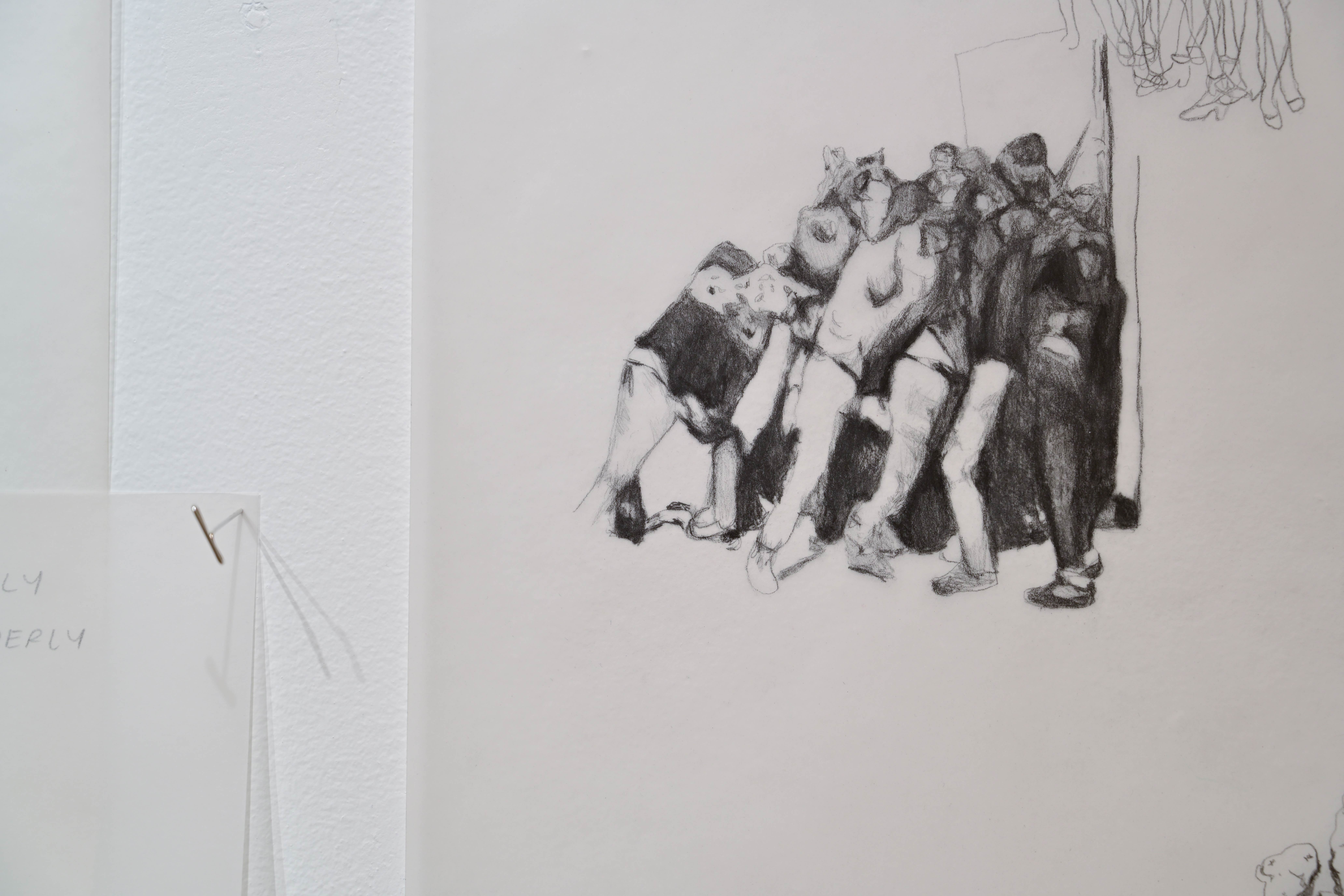Mound Studies


Recorded in Palestine as recently as the 20th century, the stacking of individual handheld stones, almost always limestone, into mounds was practiced to mark important interpersonal or communal moments and spaces. The individual stones are called witness stones, from the Arabic word mashahid, the place from which something is seen or the place where a pilgrim testifies his unity to God. According to Islamic tradition, people may ask animals, plants, or stones to testify on their behalf on the day of judgment. The limestone stacks along roads and on top of hills formed a visual network, known to be protective in a landscape inhabited by jinn and evil spirits.
To know the meaning of each mound, one must already have an intimate bond with the resident community and a relational understanding of the land. The act of stacking a stone is both individual and collective, intimate and quotidian, permanently inside a stone’s “memory” and part of a fragile, impermanent structure. It is an act of recording, a temporary archive made up of minor figures and moments. In these drawings, the human and nonhuman body mirror one another as witness, as formation, as ruin, and as agent of resistance.
Photography by Emma Beatrez

2020
Formations
Graphite on paper
11.75 in x 16.5 in // 30 cm x 42 cm

2020
To Mound
Graphite on paper
13 in x 16.5 in // 33 cm x 42 cm
